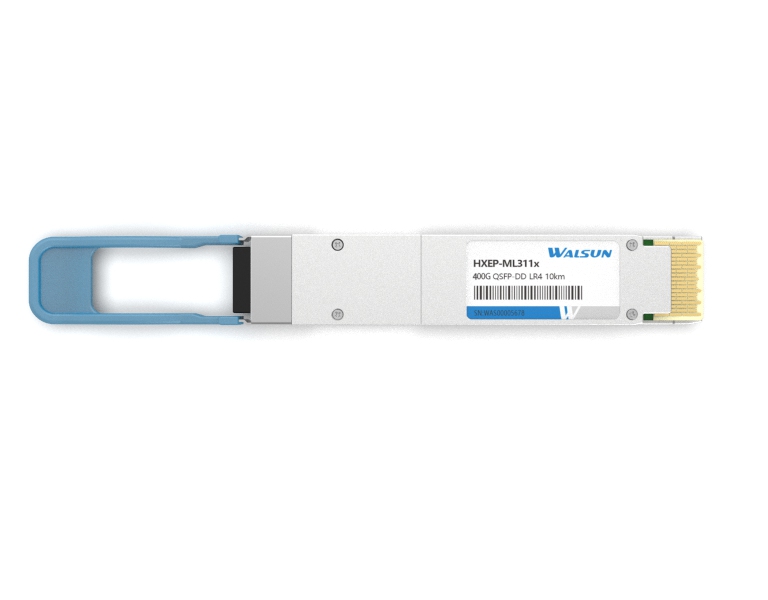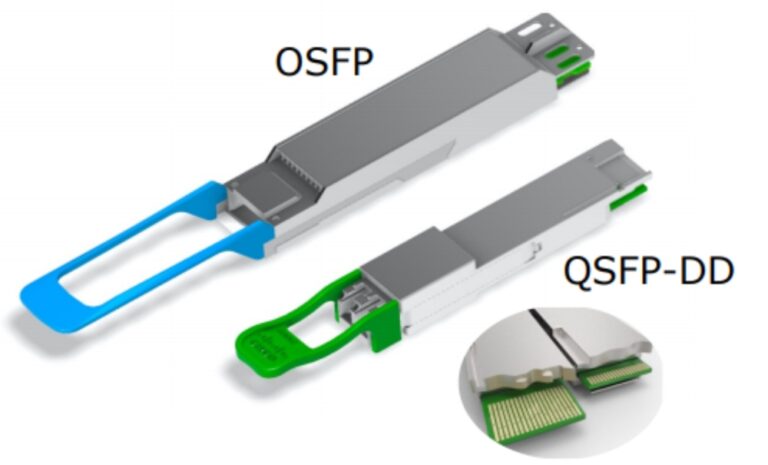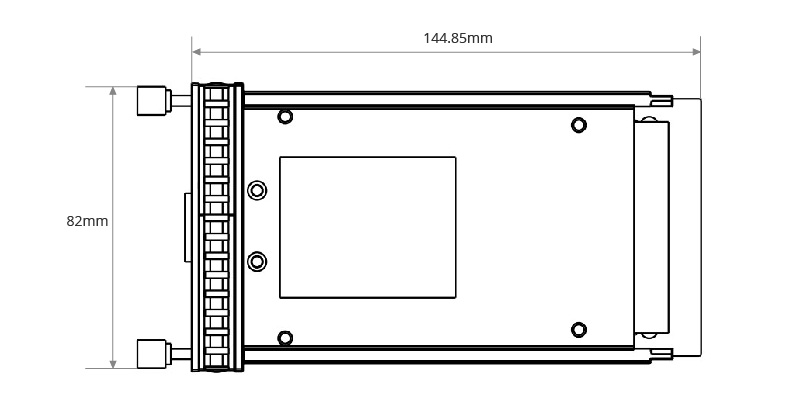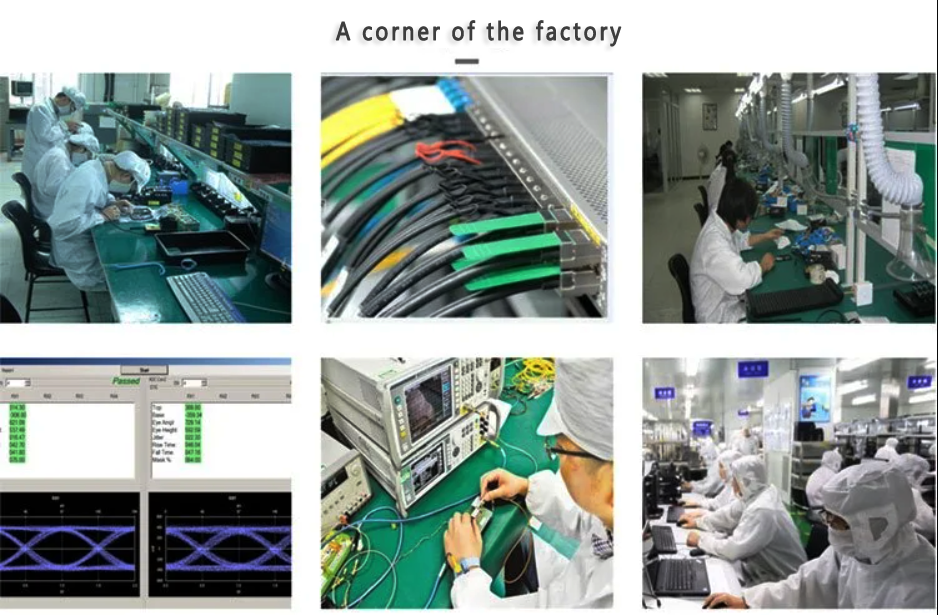

 Knowledge Base +
Knowledge Base +  2023.11.28
2023.11.28QSFP28 DD (Double Density) is a module that supports 8 lanes of high-speed data transmission, with each lane operating at 56 Gbps for a total aggregate data rate of 400 Gbps. QSFP28 DD utilizes a higher density of lanes to achieve higher data transmission speeds.

On the other hand, QSFP-DD (Quad Small Form-factor Pluggable Double Density) is a module that also supports 8 lanes of high-speed data transmission, but each lane operates at 112 Gbps for a total aggregate data rate of 800 Gbps. QSFP-DD achieves higher data transmission speeds through both higher lane density and higher individual lane speeds.
How do they compare?
SFP and SFP+: SFP is for 100BASE or 1000BASE applications while SFP+ is used in 10GBASE applications. SFP+ ports can accept SFP optics but at a reduced speed of 1 Gb/s, but an SFP+ transceiver cannot be plugged into an SFP port.
SFP+ and SFP28: SFP28 is designed for use with 25GBASE connections. SFP+ and SFP28 have the same form factor, and compatible pinouts. SFP28 transceivers will work with SFP+ optics but at a reduced speed of 10 Gb/s.
QSFP and QSFP+: QSFP carries 4 x 1 Gb/s channels. QSFP+ supports 4 x 10 Gb/s channels and the channels can be combined into a single 409 Gb/s connection. A single QSFP+ can replace 4 SFP+ transceivers resulting in greater port density.
QSFP-DD, QSFP28, and QSFP56: QSFP-DD transceivers have the physical dimensions and same port densities as the QSFP, QSFP28, and QSFP56 but double the number of lanes to eight. QSFP-DD modules are available that support 400 Gb/s and 800 Gb/s. To accommodate the greater number of lanes, the mechanical interface of QSFP-DD on the host board is slightly deeper than that of the other QSFP transceivers to support an additional row of contacts.
What's OSFP?
OSFP has 8 lanes in two different configurations, 50 Gb/s per lane for a total of 400 Gb/s and 100 Gb/s per lane for a total of 800 Gb/s. It鈥檚 larger than QSFP-DD and measures 22.58 x 107.8 x and 13.0 mm compared with 18.35 x 89.4 x 8.5 mm for QSFP-DD. A 1U front panel can accommodate up to 36 OSFP ports for a total of 14.4Tb/s. There are currently three single-mode fiber implementations that can support distances up to 2 km and three multi-mode fiber implementations that support distances up to 10 km. Since QSFP-DD modules are smaller their thermal capacity is only 7 to 12 watts. The larger OSFP transceivers have a thermal capacity of 12 W to 15 W (Figure 1).

Figure 1. OSFP uses a larger module with more thermal capacity compared with QSFP-
40G QSFP+ Transceiver Wiki
What Is QSFP+ Module?
As the evolution of QSFP (quad small form-factor pluggable), the QSFP+ module is a compact, hot-pluggable transceiver used for 40Gbps speed. It is compliant with SFF-8436 and QSFP Multi-source Agreement (MSA). There are 4 independent 10Gbps data lanes in each direction to support 40Gbps aggregate bandwidth. QSFP+ has been widely used in 40GBASE-X Ethernet, breakout to 10GBASE-X Ethernet, data center aggregation and backplane applications, and datacom switch and router connections. The following figure illustrates the QSFP+ dimensions.
40G QSFP+ vs 40G CFP: What's the Difference?
What Is 40G CFP?
CFP, short for C form-factor pluggable, is compliant with MSA to produce a common form-factor for the transmission of high-speed digital signals. This standard was primarily designed for 100 Gigabit Ethernet systems, but it can also support 40GbE. There are three main types of 40G CFP modules, 40GBASE-SR4 CFP is applied for 150m transmission on OM4 MMF with MTP connectors; 40GBASE-LR4 CFP is designed for 10km transmission on SMF with SC duplex connectors and 40GBASE-FR CFP is used for 2 km transmission on SMF with SC duplex connectors. The following figure illustrates the CFP dimensions.

CFP mechanical dimensions
What Is the Difference Between QSFP+ and CFP?
First, a CFP module is quite large in size visually, which would not support stacking or ganging but with a higher pricing. The interface of a CFP module is MTP or SC duplex, which is different from the MTP or LC interface of the QSFP+ module as well. Besides, 40G CFP modules have relatively limited types, so they can't satisfy users' diversified demands for different distances. In a word, QSFP+ is smaller in size and relatively inexpensive with higher flexibility and wider application compared with 40G CFP.


Subscribe to the newsletter
for all the latest updates.
2-5# Building, Tongfuyu Industrial Zone, Aiqun Road, Shiyan Street, Baoan District, Shenzhen. China
